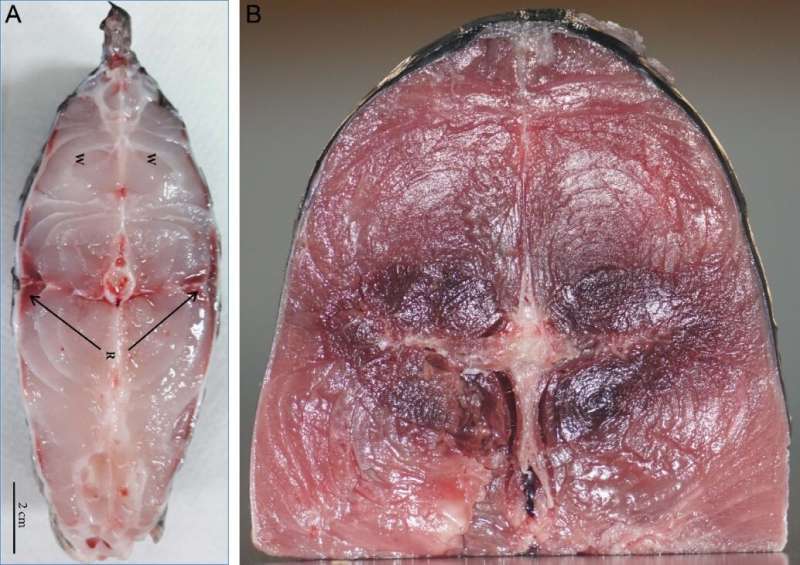This article has been reviewed according to Science X's editorial process and policies. Editors have highlighted the following attributes while ensuring the content's credibility:
fact-checked
peer-reviewed publication
trusted source
proofread
Different pathways for achieving endothermy in teleost fish species

Endothermic animals include mammals and birds, but there are also some fish capable of endothermy. Over hundreds of millions of years of evolution, at least 40 species of fish have overcome the challenge of losing heat in water and successfully achieved partial or full-body endothermy, including moonfish, mackerel tuna, and sailfish.
Compared to cold-blooded fish, they possess unique heat-producing tissues. The heat generated by these tissues can be transferred to other parts of the body through a network of arteries and veins, achieving a relatively higher body temperature than the environment, enabling them to have greater mobility in cold water. However, how are these heat producing tissues generated? Do different fish have similar molecular mechanisms?
To further explore these scientific questions, researchers from Northwestern Polytechnical University and South China Sea Fisheries Research Institute conducted a comparative genomic analysis of two endothermic fish species (mackerel tuna and sailfish). In their work is published in the journal Science China Life Sciences, they found that there are a series of genetic variations related to muscle differentiation in the genome of mackerel tuna, and there is a special group of slow muscle cells in the heat-producing tissues that is derived from muscle specialization.

This group of cells highly expresses many genes related to muscle contraction, has strong muscle contraction ability, and is the main reason for heat production. In contrast to mackerel tuna, the heat-producing tissues of another endothermic fish species (sailfish) significantly weakened the muscle contraction ability and instead produced heat by decomposing ATP through ineffective circulation of calcium ions within muscle cells.
Although their heating mechanisms are different, they both have a very high proportion of mitochondria and very rich blood vessels responsible for providing the basic source of energy and heat transfer. This study indicates that in the process of adaptation, organisms will achieve the same goal through different pathways and maximize the use of existing biological foundations.
More information: Baosheng Wu et al, Distinct and shared endothermic strategies in the heat producing tissues of tuna and other teleosts, Science China Life Sciences (2023). DOI: 10.1007/s11427-022-2312-1
Journal information: Science China Life Sciences
Provided by Science China Press




















